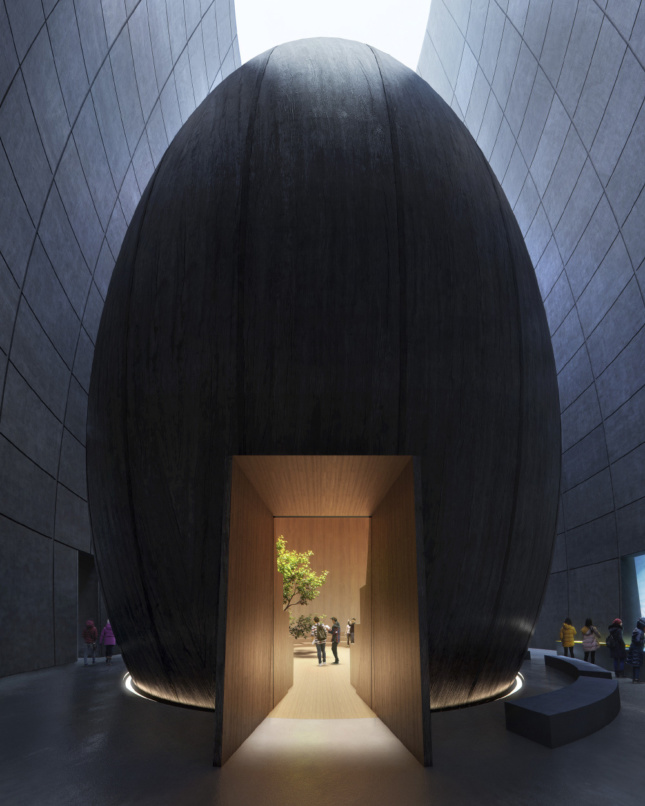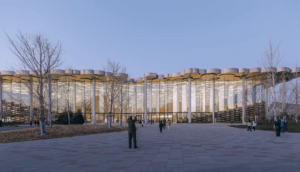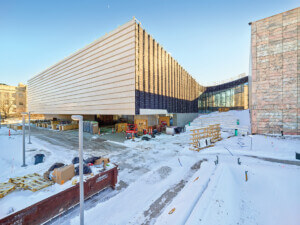Svalbard, one of the northernmost and faraway inhabited bodies of land in the world, has become an unlikely architectural destination in recent years. The Svalbard Global Seed Vault in Norway, a bunker buried deep within the permafrost to protect nearly one million seed species in the event of global catastrophe, was not intended as a tourist attraction when it was first completed by Snøhetta in 2008. Yet, because its mission and dramatically-designed entranceway have caught global attention, Snøhetta was recently called upon once again to design The Arc, a visitors’ center for the building often described as a life raft for biodiversity.
The two buildings constituting The Arc have distinctly opposing aesthetic relationships to the surrounding landscape. The entrance building will be a low-slung, modestly proportioned boxy structure clad with mirrors to blend into the surroundings, and will contain basic visitor functions and a cafe. The exhibition hall, on the other hand, will be set within a monolithic, silo-like tower that will make its presence felt from great distances. The tower’s striated exterior texture is designed to resemble layers of earth after excavation, recalling the lengths taken to protect the seeds in the nearby vault.

The exhibition hall will contain a digital archive detailing the contents of the vault, an auditorium, and a “ceremony room” (set a few degrees warmer than the other rooms, which will house a deciduous tree like those that once commonly grew in Svalbard over 56 million years ago. According to Snøhetta, the tree “is both a symbol of the past and a call to action—a living icon for global warming and our responsibility to preserve the Arctic, and all of nature, for future generations.”
Visitors will transition from the first space to the second via a glass-enclosed bridge that will frame views of the landscape while simulating “the experience of going from a familiar entrance into a real vault inside the permafrost of Svalbard,” according to the architects. Construction is expected to begin next year and be completed by 2022.











